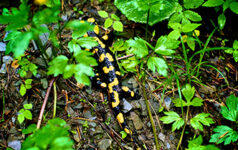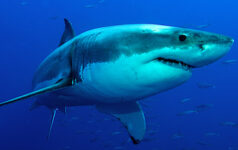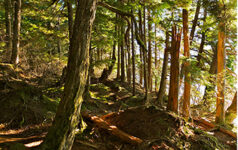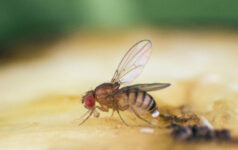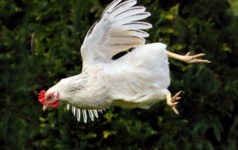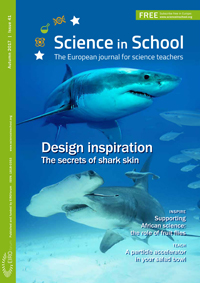
Articles
Showing 10 results from a total of 13
A unique experiment tracks microbes changing over thousands of generations – so we can watch evolution on fast-forward.
From samurai swords to healthy tomato plants, this little-known element has wider uses than you might expect.
Science in School is published by EIROforum, a collaboration between eight of Europe’s largest inter-governmental scientific research organisations (EIROs). This article reviews some of the latest news from the EIROs.
Gravitational waves were predicted by Einstein – but where do they come from, and what different types might there be out in the cosmos?
Shark skin is adapted for energy-efficient swimming in remarkable ways, some of which are now being copied by designers and engineers.
The same molecule that keeps mighty trees standing also led to the first multicellular life forms – and can even be used to make sweet treats.
Not only is the fruit fly a valuable model organism, but it is also helping to put Africa on the scientific world map.
Create a particle accelerator using a Van de Graaff generator, a ping-pong ball and a salad bowl to understand how it is used to study matter at the smallest scale.
Dissect a chicken from the supermarket to discover the unusual pulley system that enables birds to fly.

Evolution in action: the 67 000-generation experiment
Elements in focus: molybdenum
Exotic particles, fusion-device ashtrays and lunar missions
Gravitational waves: a taxonomy
Design inspiration: the secrets of shark skin
Cellulose: from trees to treats
Supporting African science: the role of fruit flies
A particle accelerator in your salad bowl
How do birds fly? A hands-on demonstration







